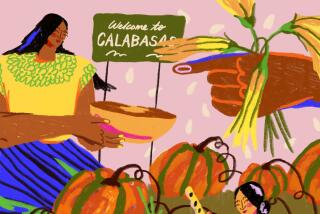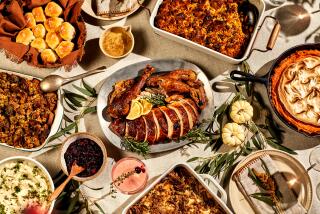Berry of the north: Where your Thanksgiving cranberries come from

- Share via
First mass-sold in 1914, cranberry sauce is now a mainstay. Some parts of the U.S. prefer the term “relish” and will incorporate other fruits into the mix. This is also served in the U.K. as part of a Christmas meal.
Wisconsin leads the nation in the number of acres used to produce cranberries, according to the most recent data available from the United States Department of AgricultureNational Agricultural Statistics Service. The state was followed by Massachusetts and New Jersey.
Cranberries are one of the few fruits native to the Americas. They grow in shrubs that can be up to 7 feet tall. While the berries are not grown in bogs, the fields are often flooded to harvest because the berries float in water.
The methods for commercial production of cranberries were developed by a group of farmers who later formed the brand Ocean Spray.
Since then, little has changed about the jellied sauce.
Making your own isn’t particularly difficult. The simplest recipes call for just sugar and berries, and a pan to simmer. Once reduced, the pectin in the berries will naturally form a gelatin once cooled.
Alternatively, a chunkier more relish-like sauce can be made cold, which welcomes additions of citrus and warming spices like ginger and clove.
Since then, little has changed about the jellied sauce.
Making your own isn’t particularly difficult. The simplest recipes call for just sugar and berries, and a pan to simmer. Once reduced, the pectin in the berries will naturally form a gelatin once cooled.
Alternatively, a chunkier more relish-like sauce can be made cold, which welcomes additions of citrus and warming spices like ginger and clove.
More to Read
Eat your way across L.A.
Get our weekly Tasting Notes newsletter for reviews, news and more.
You may occasionally receive promotional content from the Los Angeles Times.









